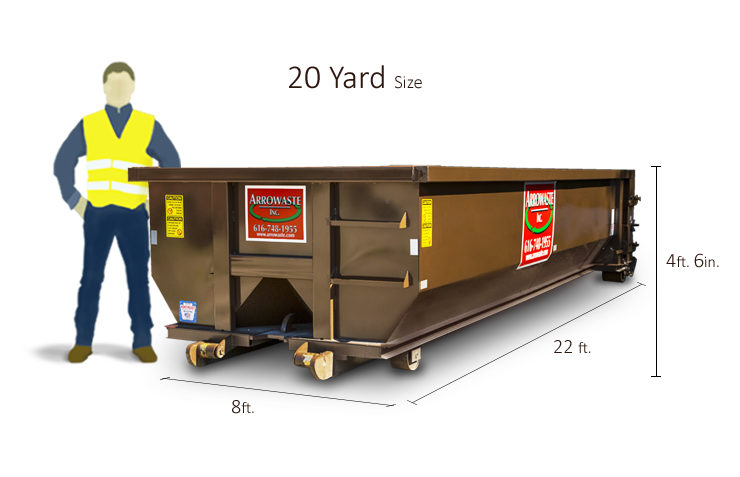Optimizing your dumpster rental experience involves greater than simply choosing a dumpster dimension. It calls for cautious consideration of several elements, including the rental period, dumpster type, and neighborhood regulations. Precise waste quantity estimation and correct placement of the dumpster are essential to making certain reliable waste management and price financial savings. Additionally, comprehending weight capacity, local ordinances, and strategically https://privatebin.net/?9c76c6b17a197225#5xLHg8ZYDYS9zUVCb7vJKDJKCAHXk4gfzPDYydczy43h intending pick-up and delivery routines can aid decrease overweight fines and task hold-ups. By mastering these essential parts, you can simplify your waste administration process and reveal much more methods to enhance your dumpster rental experience.
Determining the Right Dumpster Size
When dealing with a job that calls for waste removal, one of the most vital decisions hinges on figuring out the best dumpster size A dumpster that is as well little can cause pricey overflows and additional fees, while one that is also large can result in unnecessary expenses and squandered space.
In order to prevent these issues, it's essential to properly estimate the volume of waste your project will generate.
Factors to consider when picking a dumpster size include the kind and quantity of materials being dealt with, the accessibility of space on-site, and any kind of local regulations or restrictions.
Typically, dumpsters vary in size from 10 to 40 cubic backyards, with one of the most usual dimensions being 20 and 30 cubic yards.
It's likewise crucial to assess the weight capacity of the dumpster, as exceeding the recommended weight can result in added costs or even damages to the dumpster.
Choosing the very best Rental Period
Once the optimal dumpster dimension has been determined, attention can shift to picking the most effective rental duration, a crucial facet of the dumpster rental process that can greatly influence task expenses and efficiency.
The rental duration should be thoroughly thought about to assure that the dumpster is on-site for the needed quantity of time, without sustaining unnecessary costs.
When selecting the very best rental duration, take into consideration the following variables:
Project timeline: How long will the task require to complete? Be sure to represent any type of prospective delays or setbacks.

Debris generation rate: Just how swiftly will squander be produced during the project? A quicker generation price may need a much shorter rental period.
Dumpster capacity: Exactly how often will the dumpster requirement to be cleared? A bigger dumpster may call for a much longer rental period.
Budget constraints: What is the allocate the rental duration? A longer rental duration might be more affordable in the long run.
Selecting the Suitable Dumpster Type
The size of the dumpster is also important. A smaller sized dumpster might be excellent for smaller sized jobs or those with minimal room, while larger dumpsters are better fit for large jobs that generate a significant quantity of waste.
Additionally, consider the dumpster's material and weight capacity Some dumpsters are made for heavy materials like concrete or asphalt, while others are much better fit for lighter products like drywall or flooring.
Understanding Neighborhood Regulations
Local statutes and laws can greatly impact the dumpster rental process, making it necessary to recognize the regulations regulating waste disposal in your area.
Failure to adhere to local laws can result in penalties, fines, and even job hold-ups. It's essential to research study and acquaint yourself with the details regulations in your location before renting out a dumpster.
Some key guidelines to think about include:
Permit requirements: Establish if you require a permit to place a dumpster on your residential or commercial property or street.
Waste acceptance: Learn what types of materials are accepted in the dumpster and what products are prohibited.
Dumpster placement: Understand the rules for placing a dumpster on your building, consisting of constraints on size, area, and duration.
Noise restrictions: Understand sound policies and restrictions on dumpster distribution and pickup times.
Calculating Your Waste Volume
How much waste will your project create? Computing your waste volume is an essential step in maximizing your dumpster rental experience This procedure helps you figure out the right dumpster size, lowering the danger of overpaying for unneeded capacity or, worse, lacking area mid-project.
To quote your waste quantity, take into consideration the type and quantity of products you'll be getting rid of. For construction projects, calculate the square footage of the location being restored or demolished, and increase it by the expected waste generation rate (commonly 1-2 cubic lawns per 1,000 square feet).
For household cleanouts or special events, tally up the variety of items being disposed of, such as furniture, appliances, or trash bags. Make sure to make up bulky items, like sofas or fridges, which use up a lot more space than their weight would certainly suggest.

Then, talk to your dumpster rental provider to identify the perfect dumpster dimension based upon your estimations. By precisely computing your waste volume, you'll assure a smooth and efficient waste management process
Strategically Placing Your Dumpster
Ideal dumpster positioning is crucial to assure a smooth waste management procedure. A well-placed dumpster not just ensures very easy access for waste disposal however additionally protects against prospective threats and liabilities.
When identifying the ideal area for your dumpster, consider the following variables:
Accessibility: Put the dumpster in a location that is quickly accessible for employees, cars, and pedestrians to decrease traffic congestion and accidents.
Visibility: Position the dumpster in a noticeable place to motivate accountable garbage disposal and protect against unlawful dumping.
Proximity to throw away generation: Locate the dumpster near the area where waste is created to reduce transportation distances and labor costs.
Compliance with regulations: Validate the dumpster is placed in conformity with neighborhood guidelines and statutes, avoiding fines and penalties.
Minimizing Overweight Fines
Proper dumpster placement sets the stage for a successful waste administration process, and it's similarly crucial to identify the dumpster is not overloaded, as this can lead to pricey overweight fines.
Overloading can occur when the weight of the waste exceeds the dumpster's maximum capacity To prevent this, it's important to approximate the weight of the waste precisely and pick the right dumpster size for your project.

Additionally, it's crucial to disperse the weight uniformly within the dumpster to stop shifting during transportation.
Another method to minimize obese fines is to separate hefty materials like concrete, brick, or asphalt from lighter waste. By doing so, you can protect against overloading and facilitate a smoother disposal process.
Moreover, it's suggested to maintain a document of the waste disposal process, including weight tickets and disposal receipts, to prove compliance with laws in situation of an audit.
Streamlining Pick-up and Delivery
Scheduling dumpster pickups and shipments successfully is important to preserving a seamless waste administration process. By enhancing these logistics, you can ensure that your task stays on track and avoids pricey delays.
When coordinating with your dumpster rental provider, it's important to offer exact info concerning your job's timeline and waste generation rates.
To ensure a smooth pick-up and shipment process, keep the complying with pointers in mind:
Specify exact delivery and pickup dates to stay clear of confusion and miscommunication. Designate a clear drop-off location to ensure simple gain access to for the delivery driver. Provide precise price quotes of waste volume to stop overloading or underloading the dumpster. Confirm the rental period and extensions to prevent unexpected charges or penalties.